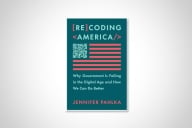You have /5 articles left.
Sign up for a free account or log in.
This academic year marks year seven—our last, if all goes well—of paying college tuition for our kids. (TB’s senior year and TG’s first year were the same year.) My brother has just joined the ranks of tuition payers, with his oldest arriving at college a few days ago. We’ve both found ourselves in the increasingly common spot of making too much to get much aid, but too little to reasonably afford tuition without significant aid.
We’re not alone. That gray zone of “theoretically affordable, but not really” has become normal.
If anything, it seems to be expanding. We’re lucky enough that for us, it’s annoying rather than prohibitive. That’s not true for everybody.
People land in the gray zone in any number of ways. Sometimes the FAFSA calculation is simply unrealistic, whether because of fluctuating income, multiple siblings, divorce or the actual cost of living. Need-based aid is usually based on the FAFSA (or the CSS) or income tax return data, each of which is based on formulas that reflect political compromises rather than the cost of living. “Need” is a judgment, and judgments at scale tend to be blunt instruments at best. In practical terms, they pretty much have to be. Sometimes, though, the issue is even worse than the quirks of the FAFSA calculation. To save money, many colleges engage in “gapping,” or offering less aid than even the FAFSA recommends. That makes the gray zone even bigger.
And that’s under the relatively rosy scenario of having two-parent families in which both are citizens, both are employed and nobody has a disability requiring massive economic support. People with disabilities are often subject to unrealistically low savings thresholds before they lose Medicaid coverage; ABLE accounts help, but they go only so far, and relatively few eligible people know that they exist. Undocumented parents may be increasingly unwilling or unable to submit financial information, even if their children are citizens. And divorced and/or mixed families introduce variables that no algorithm will anticipate. (I had personal experience of that in my student days. It wasn’t pretty.) Include any of those in the picture, and the shortfalls of the current system become more dramatic.
I had hoped that the free community college movement would make many of these issues moot. But it fizzled at the federal level, as did most student loan forgiveness. Some states adopted versions of free community college, which is great, but states don’t have the fiscal flexibility that the federal government does. Most states aren’t allowed to run deficits, and public college enrollments are usually countercyclical to the economy, which means demand for college goes up at the same time that state tax revenues go down. Without a mechanism to offset the imbalance, public scholarship programs tend to get shorted when they’re most needed. Worse, even when they’re funded, state programs often include means-testing phase-outs that create gray zones of their own.
With all of those ways into the gray zone, it’s unsurprising that so many people are there. But as an industry, I don’t think we’ve paid enough attention to how people on the ground experience it.
It comes across as insulting. Being told that aid is for other people, but you have to pay what seems like an unreasonable amount, leaves a bad taste.
I’ve had conversations with parents who can’t believe that they’re judged too rich to help. They aren’t happy, and there isn’t much to say to make them happy. I can’t help but think that part of the reason the public hasn’t rallied to our side in response to recent political attacks is that after years of being directly and personally insulted, as they see it, they don’t mind seeing some payback. We can offer structural explanations, but structural explanations don’t help when you’re facing a tuition bill higher than you expected and the institution essentially tells you to suck it up. Heck, when UVA had the gall to raise TB’s tuition for a fully remote year, I was personally offended. Years later, I still grumble at the memory. The causes may be long-term and structural, but the offense is direct and personal.
Answers to the gray zone exist, in big and small ways.
The best big answer, of course, is recognizing the social benefit of education generally and supporting it with enough public funding that tuition becomes an afterthought. Public libraries don’t have the gray zone because they don’t charge for access to books. That’s an excellent model, and it has ample precedent. The challenge there is political.
A small but institutionally actionable answer involves strategic philanthropy. We recently had a donor who specifically wanted to aim scholarship money at students in the gray zone, to ensure that they can finish their programs and get started in their careers. It struck me as a fantastic idea. Yes, it’s hard to scale, and yes, it leaves existing systems intact. But until we can get to a saner political moment, it can make a genuinely positive difference for untold numbers of students. It may even serve as a proof of concept for a larger change.
The main challenge now is to acknowledge the existence of the gray zone and to incorporate that knowledge into policy. The gray zone isn’t just a regrettable imperfection; it’s a direct threat to higher education’s continued existence. It corrodes public support and plays into narratives that make us the bad guys. Every single time a policy includes means-testing, sliding scales, income cutoffs or gapping, we create enemies. We’ve focused so much on immediate economic cost that we’ve lost sight of long-term political cost. I’m much less worried about some scion of the upper middle class getting a free education than I am about folks in the vast middle deciding they’ve had enough and voting for people who will channel their anger at the wrong targets. The cost of that is much higher than simply getting it right in the first place.


